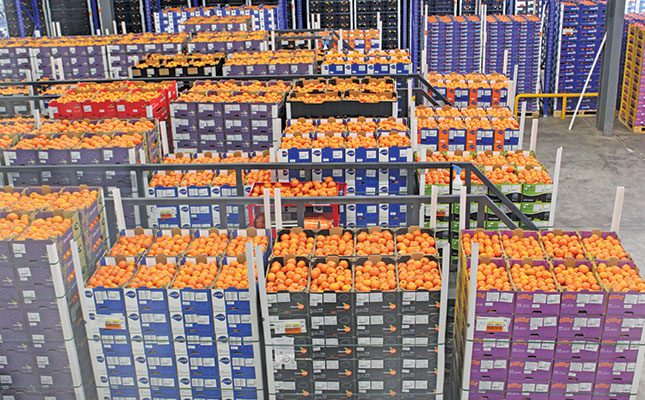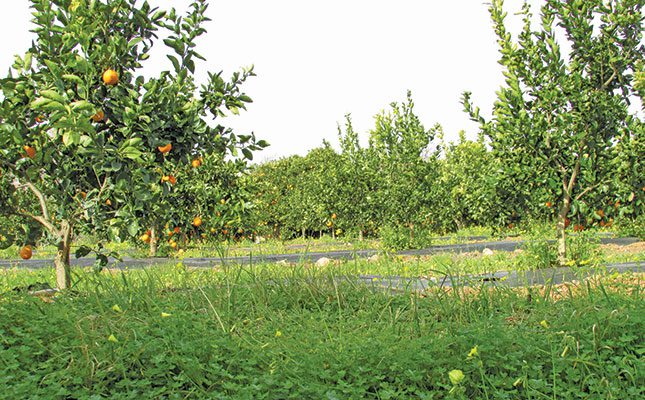
Photo: Supplied
How are premium fruit products faring considering the global economic downturn?
Quality will always sell. This goes for any product that has a good brand and delivers on the quality promise.
As such, all our brands are doing well. But strategic marketing also plays a role and if you place a product in the wrong market, you are likely to receive an invoice rather than income.
The local market has been under pressure because of bottlenecks at the ports. This was especially the case in 2022, but there has been a price recovery since.
The citrus industry is expanding rapidly. With bigger volumes coming to market and costs increasing, how do you maintain market share and profit in a crowded market?
There is concern within the wider industry that the Nadorcott volumes have, and continue to rise substantially, but for ClemenGold it is a benefit.
We know our brand gets a premium because we have been investing in it for 15 years, and this investment will continue to pay dividends going forward.

Looking ahead, we see a circular economy developing where more farmers will become part of the ClemenGold programme because of the better returns the brand offers.
This then ensures a more structured marketing environment where marketing channels are better managed and we can get a premium for the farmers, who then have more confidence in the brand.
This is a success model we have seen in many other brands. Increasing production costs remain a concern and it costs so much more to get a box of fruit on to a supermarket shelf in Europe than before.
So if that box does not sell or the producer does not get their money for some reason, the loss is so much bigger because the margins have become so slim. There is no room for mistakes any more.
The fruit sector as a whole is very competitive, but having a brand on which you can build momentum through the brand offering provides scope for growth.
Consumers don’t buy fruit seasonally any longer as they want year-round availability. If you can provide it, then you have a good opportunity to grow market share.
This is where the ClemenGold model has been beneficial, because fruit is sourced all year round and the quality promise is maintained, and hence the market share.
But this can’t be done unless you can keep providing a quality product, and continuing to do so becomes difficult as crop protection options are decreasing. Back in the day a farmer needed to be a jack of all trades; today he/she needs to be a specialist in all fields.
Since this is not really possible, farmers need to have a host of specialists on hand.
This has led to a lot of consolidation in the industry as bigger farmers are better equipped to have these specialists in place.
The economies of scale also mean that they can shoulder risks where smaller farmers can’t. From our group of companies’ point of view, providing these specialist services helps to ensure that farmers achieve the desired quality.
This is the world we are living in now; if you don’t have the best knowledge and input at your disposal, it’s difficult to remain competitive. There are so many boxes that need to be ticked to get the biggest yield and the highest quality.
There is a magnitude of little things that need to be done right, from genetics to irrigation cycles and harvesting, to ensure that quality is maximised.
Do you believe fruit branding has fully taken hold with consumers? Are they paying more attention to brands than cultivars?
Looking at the life cycle of the ClemenGold strategy, we first needed to focus on establishing the quality parameters and then consistently delivering on this quality promise.

We needed to invest in marketing that emphasised why consumers should pay more for the fruit. We have reached a point where the consumer has a positive connection with the brand and starts seeking it out.
This is where any brand wants to be. Consumers are prepared to pay more for the product because it is a trusted product that adds enough value, which they are willing to pay extra for.
Market absorption differs across the markets and can take years to establish. In China, it took 10 years to establish the brand.
We only recently entered India but it will likely also take 10 years to establish the brand there. Both countries are very brand conscious, which is good for us.
Although we are reaping the rewards of this brand investment, it is an ongoing process to promote the brand and adjust to the market.
Consumers have wisened up and want more information about what they are eating nowadays – they want to know where their fruit comes from, how it is farmed and if environmental and labour ethics are in place.
Fruit marketing is moving towards a space where you will need to put good quality in the box and also tell a story and trigger emotion.
What are the most valuable lessons learnt through the ClemenGold journey?
Having a quality that differentiates you from your competitors and consistently delivering on the quality promise is crucial. You have to have a good strategy to master the four Ps of marketing: product, price, packaging and promotion.
You need to put the right quality on the right shelf in the right market, consistently, every day to get maximum returns. This has been one of our biggest focus areas and reasons for success.
In terms of ideas that didn’t work, there have been many, But it is important to try new strategies, and then if it doesn’t work, to end it in time before it costs the business.
The saying goes that 50% of all marketing budgets is a waste of money, but you don’t know which 50%. There have been varieties that have worked and those that have not.
The Nadorcott is a one-in-a -eneration kind of fruit; it’s unbelievable how it performs. Many have brought us new varieties over the years, thinking it would be the ‘new Nadorcott’.
However, we are yet to find anything as good.
The Leandri mandarin does come close and we’ve seen that in the early season it has a far better eating quality than the early Nadorcotts. This is why we now include it in the ClemenGold brand, whereas initially we only included Nadorcotts.
How much room is there in the market for more fruit brands?
We see any branding as positive, even if it is competition. The commoditising of mandarins that are placed on a shelf without any identity at a lower price is more of a threat to the market than having more brands.
Branding in the fruit industry has always been mostly business to business. The logo is on the box and the fruit is usually unpacked in the supermarket, so the market buyers get to know the brands, but not the consumers.
Branding on a wholesale box will only take you so far. If the farmer decides to take the branding further to ensure it remains branded until it reaches the consumer, then it bodes well for him if he sticks to a quality promise.
We believe it is crucial to get our brand to the consumer, differentiate ourselves through our brand and build on it in the market. Herein, each brand has its place.
Where are the opportunities in a world that is more brand focused?
The Amazon effect, where retail is increasingly under pressure and margins are smaller, is having a big impact on farmer profitability. Everyone says supermarkets are the big money makers and are pushing up prices, but they have to compete against online shopping, which offers lower prices.
So everyone is being squeezed. To stay in business you can’t have your margins continuously shrinking, so you need to have something that retains value that consumers will be willing to pay for.
This is where branding will continue to play a role. The million-dollar question is how do we keep doing this to keep convincing the consumer to buy our product instead of someone else’s, especially when the shelves are packed with a big variety.
Each market has its own selling point and requires a unique approach. Understanding markets and what matters to consumers is therefore key.
A supermarket like Woolworths understands the power of a brand and they like to take the brand theme across the aisles. For ClemenGold this has worked remarkably well. Retailers ultimately drive sales and their big money lies in speciality products where they have exclusivity.
So having exclusivity with ClemenGold means they have an advantage, and they have capitalised on this by rolling out a range of ClemenGold products.
It gives longevity throughout the year because consumers can enjoy a ClemenGold yogurt in the off-season.
It’s the best marketing in the world when your product is rolled out into so many other products and testament to the inherent value of the brand.
Email Nico van Schalkwyk at [email protected]









